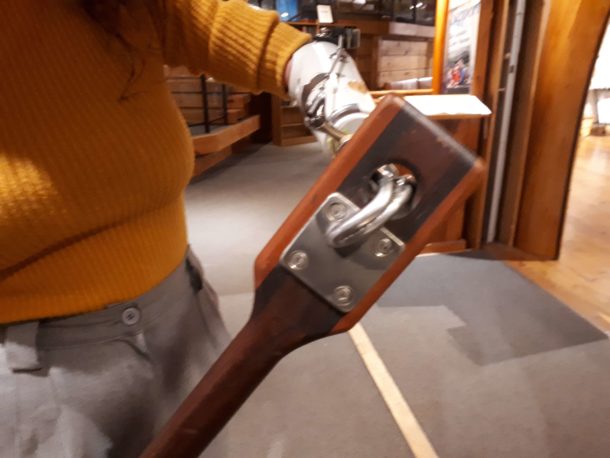How A Peterborough Woman With A Prosthetic Got Her Fitting Paddle
/Peterborough’s Rachel Quilty was born with a partial left arm and has lived with a prosthetic for most of her life. The 19-year-old, who is affiliated with War Amps, had always wanted to become a camp counsellor at Camp Oconto—an all-girls camp where she had spent many years as a camper.
With her prosthetic, she wasn’t able to complete level D instruction with a traditional paddle which she’d need to teach canoeing as a counsellor. After seeking advice from fellow camp counsellors and getting the word out, The Canoe Museum writes in a blog post how volunteers, retail business and organizations came together to make a paddle that worked for her.
Photo of Rachel with her fitted paddle courtesy Canoe Museum
THE ORIGINAL PROTOTYPES
“Wild Rock Outfitters donated a used paddle for the first prototype, in which a hole was added to accommodate the hook at the end of her prosthetic arm,” the Canoe Museum writes. More than 10 design prototypes were made over the next year to fit with Rachel’s prosthetic.
When Five Counties Children’s Centre asked Wild Rock if there was anyone they could recommend as this project evolved to find her the perfect fitting paddle, they suggested the Canadian Canoe Museum and that’s where volunteer Rick Schuett became involved.
Rachel and Rick at Canoe Museum
Rick, who has been creating custom canoe paddles for three decades, carves paddles on the second floor in the artisan exhibit area on Fridays. Rick’s first paddle for Rachel worked well, with its middle connector on the shaft for movement, but over time the constant pressure eventually broke it apart and the metal hook from her prosthetic wore down the wood on the paddle’s grip.
For the second paddle, the Canoe Museum says that “Rick re-designed the middle connector pieces with stronger materials that enabled the lower portion of the paddle to be mobile for more ease and control. In addition, he added a piece of metal to the paddle’s grip to prevent wear and tear from the hook.”
Photo courtesy Canoe Museum







